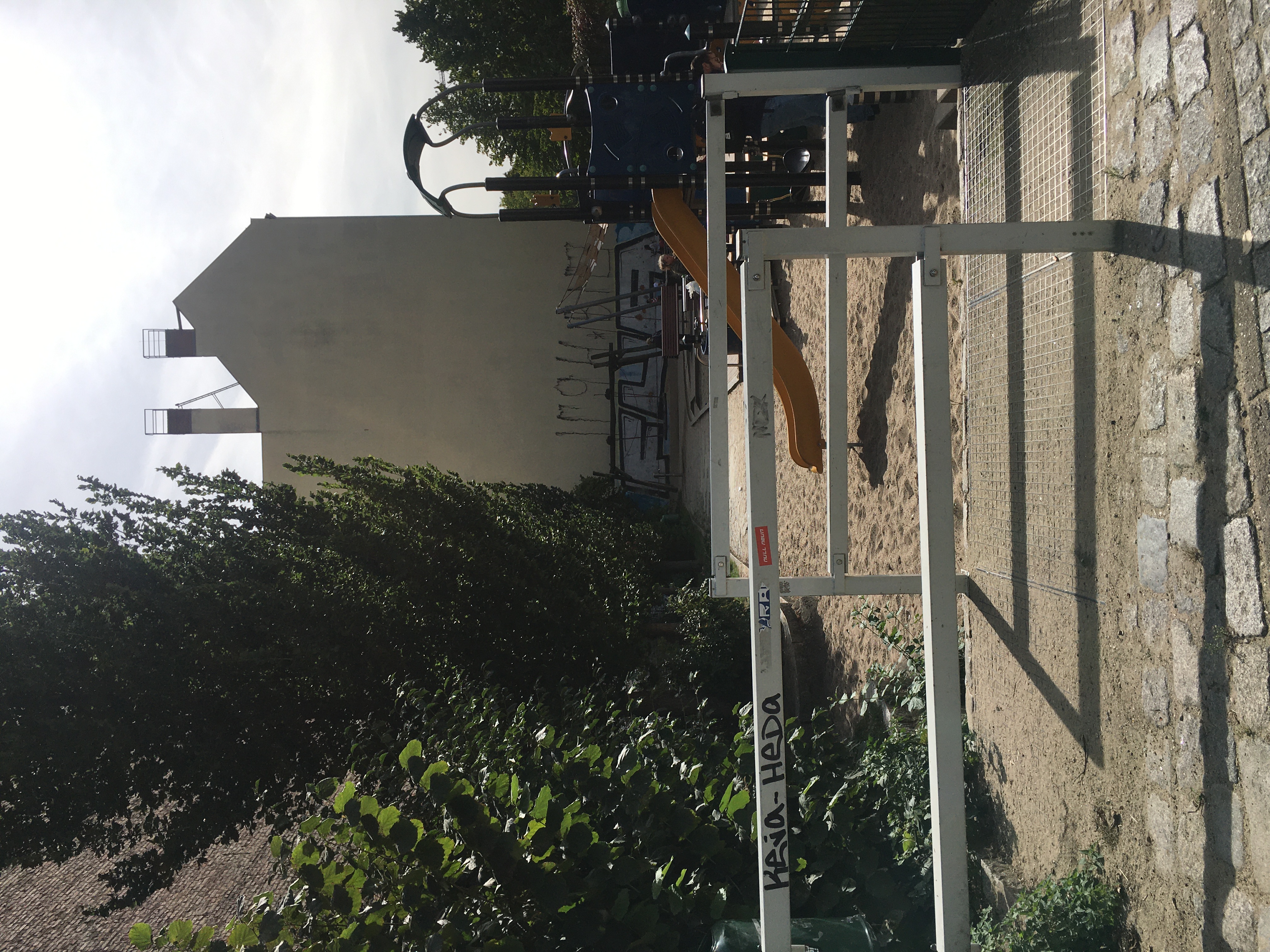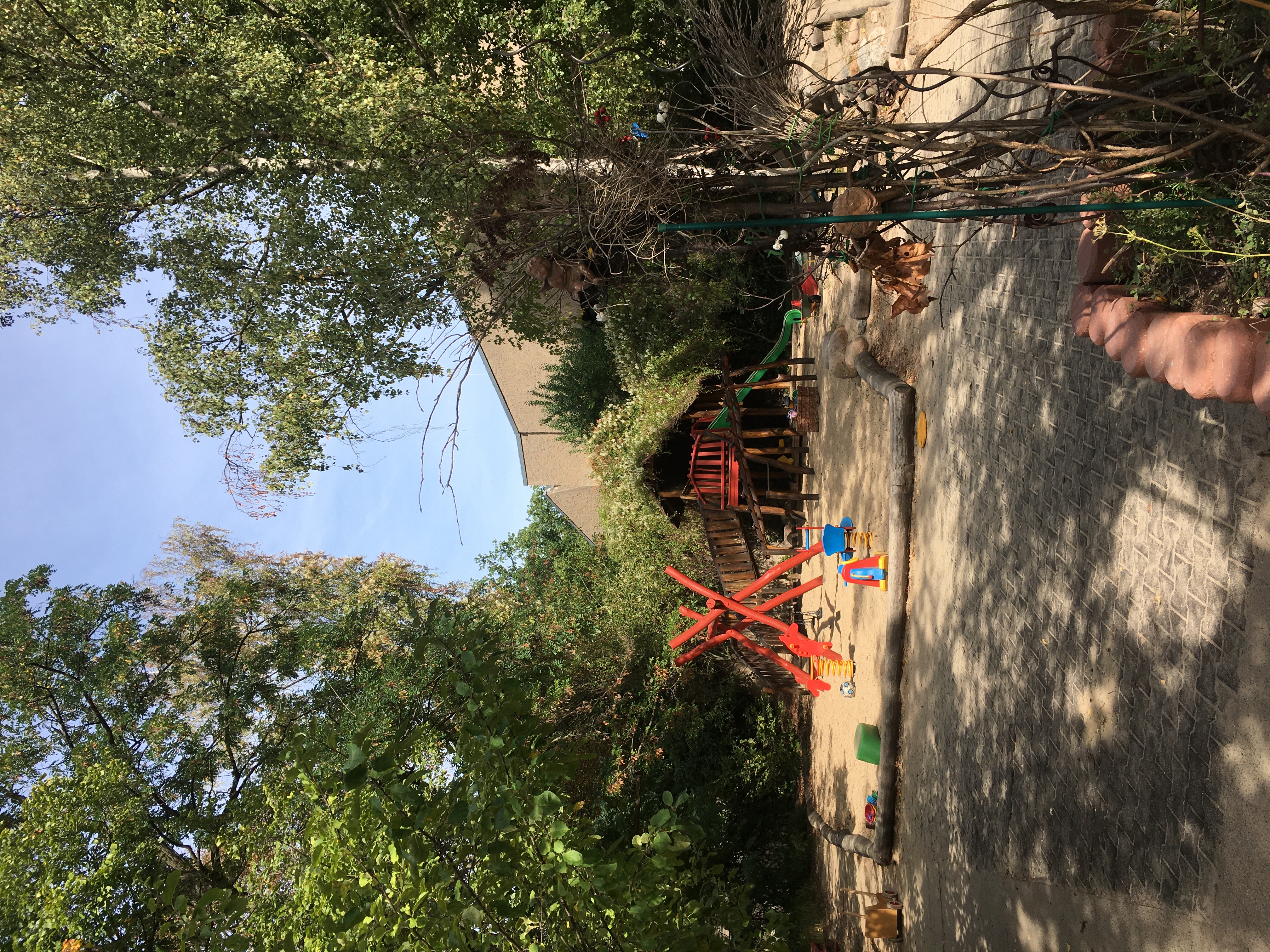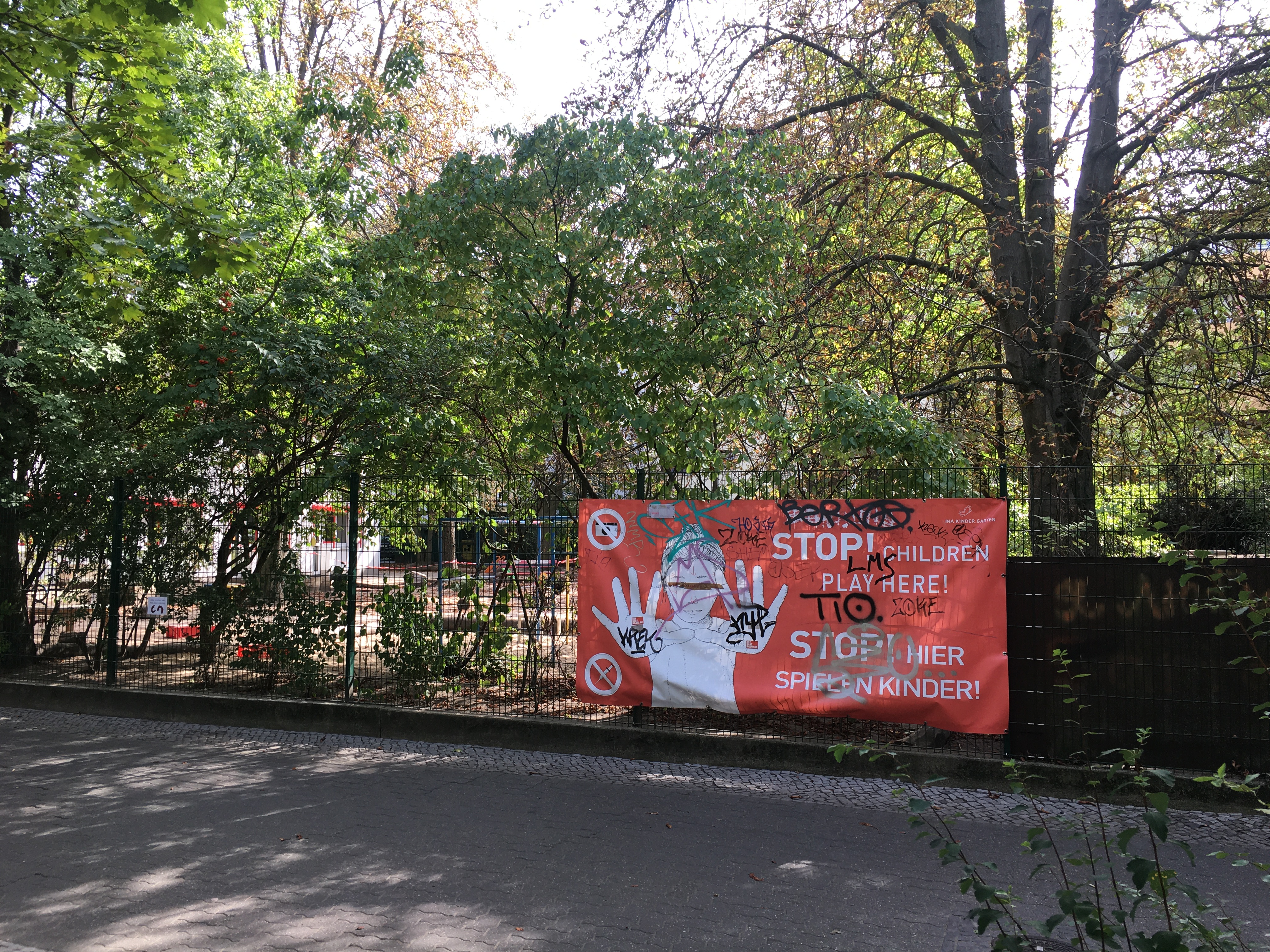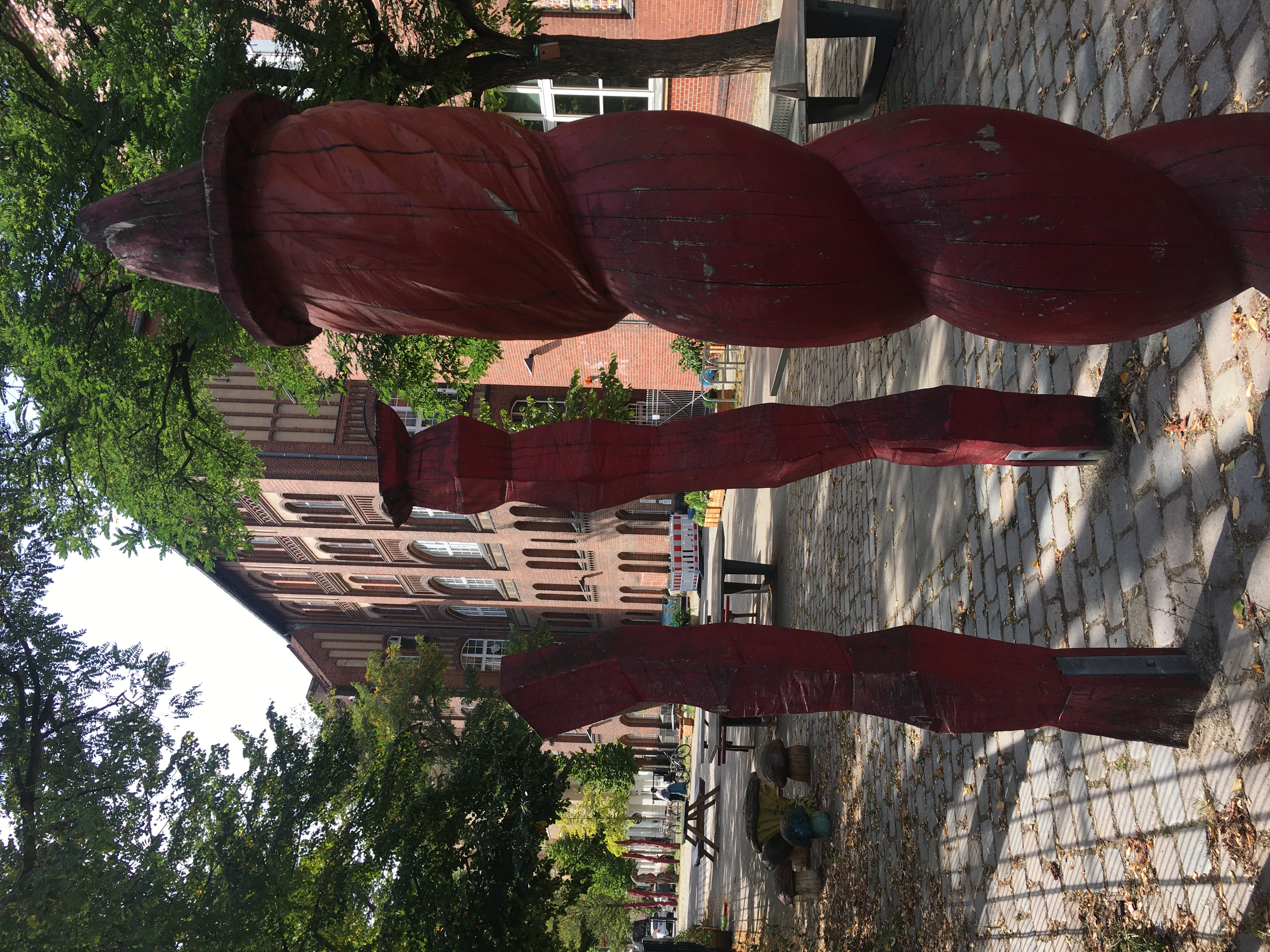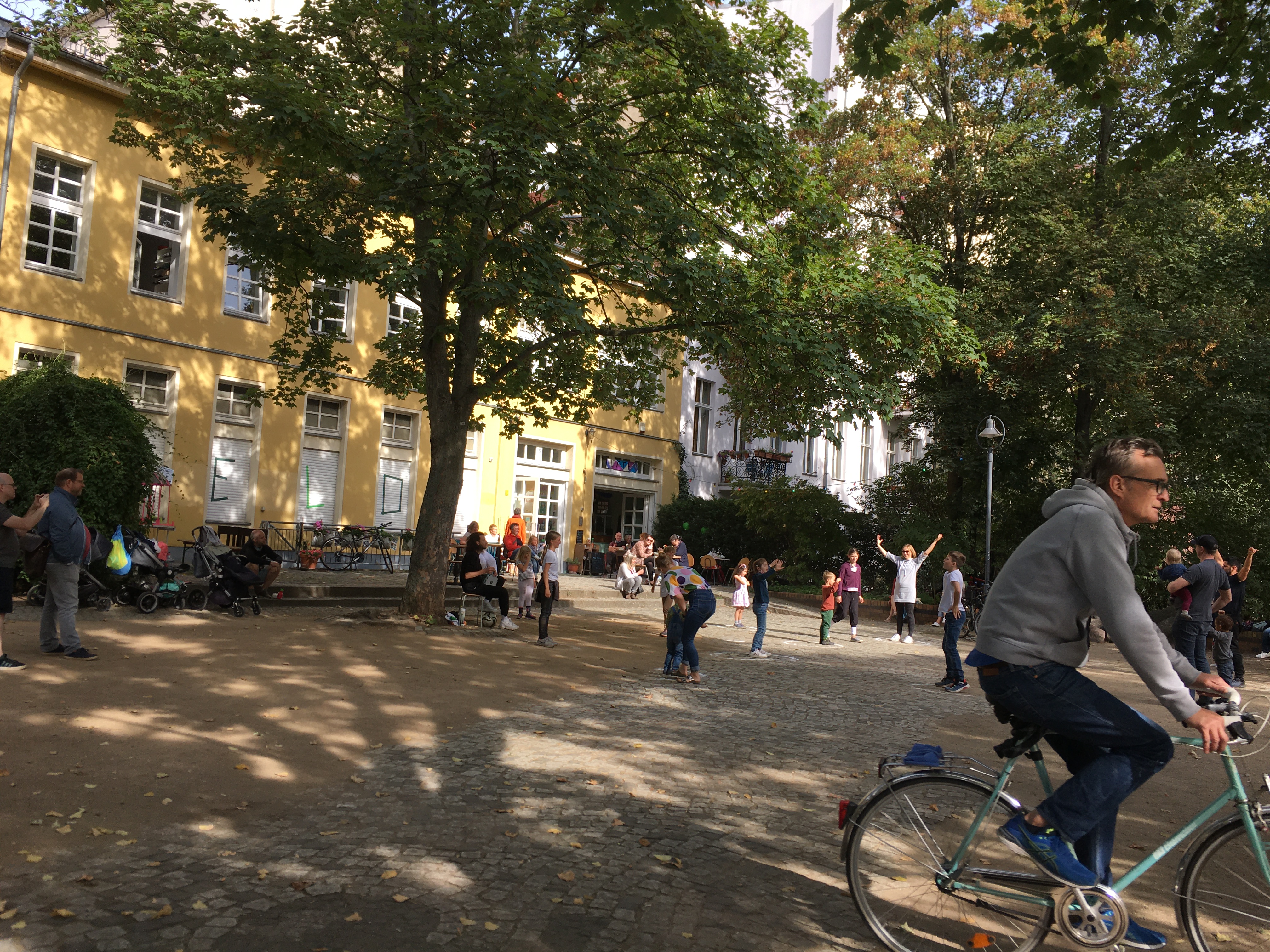Playgrounds - Michele
Mission 6 was prompted by the investigation of the neighbourhood as a pedagogic field, a place for learning and growing.
Which are the spaces, structures and learning practices that are available to or appropriated by children and youth? How are these specialized or segregated rather than integrated into urban public spaces? What kind of imprint and learning do they transmit to the users?
I focused my attention on the variety of spaces available to the people in the neighbourhood. After some observation around during a long stroll, I sorted the sites into 3 main categories, based on the different use of the space: playgrounds on a vacant lot, as institutional sites or as reclaimed spaces.
Playground on a vacant lot
This is the most common typology of playgrounds in the neighborhood: they are built on vacant lots, which were emptied by buildings during the Second World War. Even if there's no real pattern for their placement(as they can be found nearly everywhere, from the street corners or between blocks), they are part of a strategy, crafted by the municipality, that takes advantage of a law dating back from 1979, which aims to give 1 square meter of public amenities for each inhabitant.
These playgrounds present a common set of features, with standardized equipment, a clear user target and restricted rules to use them. Their main advantage is the accessibility granted by their integration in the urban fabric.
Institutional Playground
Maybe the most traditional in functions, these spaces are related to educational institutions, placed most of the time nearby a "kita"(kindergarten) or religious institutes, which have a dedicated space for their users.
These areas are the most exclusive, as the access is permitted only to a certain kind of users and only when the linked institution is open.
Playground as a reclaimed spaced
This category gathers all the spaces whose functions have been changed by the presence of the playgrounds, either as part of a planned project or as a consequence of the users' actions.
This is the case of the school playground in Eberstrasse, which has been directly placed in the street, blocking the circulation and forcing a reroute of the car traffic.
A different relationship with space is depicted by the last two images, which represent a different kind of reappropriation of space by the users. Both of the images were taken in the proximity of Winterfeldplatz, where a big open playground encourages people to take over the space surrounding it, either to play with urban furniture or to do a dance class in the little square nearby.
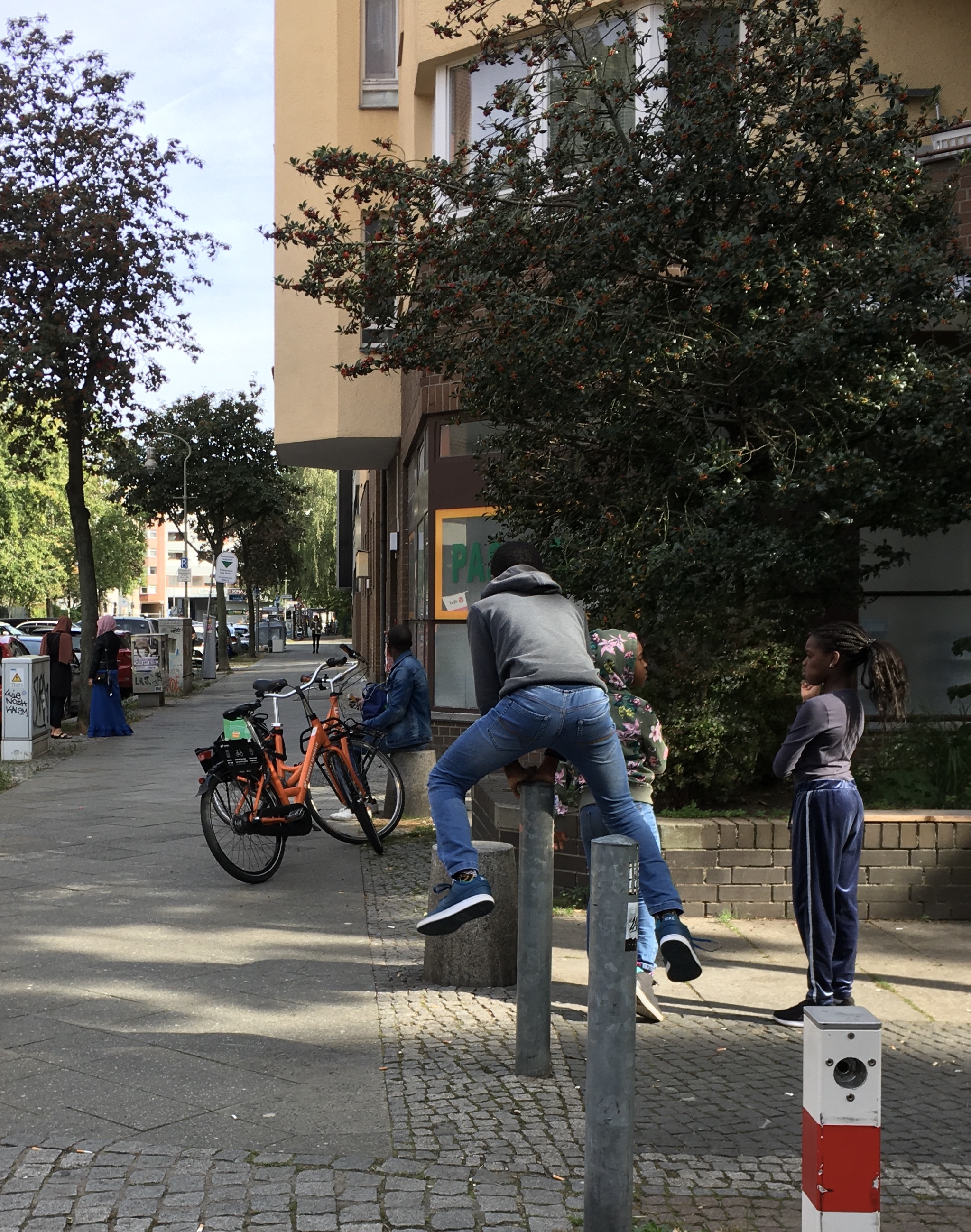
These behaviors could be seen as a positive spillover favored by the playgrounds' presence, prompting kids but also adults to participate in playful activities.
The conclusion is that the neighbourhood presents a marked attention for needs of playing of the kids, in different settings and parts of the day. Even if certain freedom is offered in the kinds of movement and actions that the users can do inside the playgrounds, all of the spaces are usually fenced and regulated. Nonetheless, wherever the surroundings make it possible, spontaneous activities flourish anyway, redefining the citizens' perception of public space.
